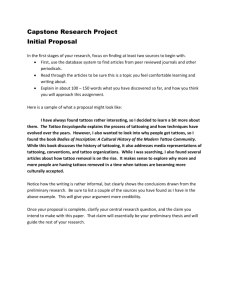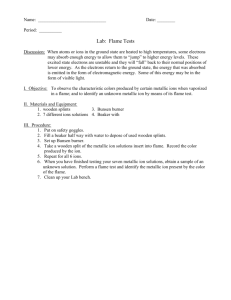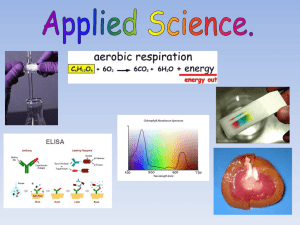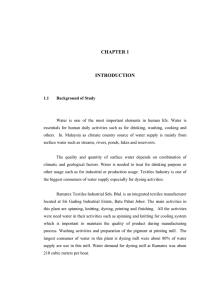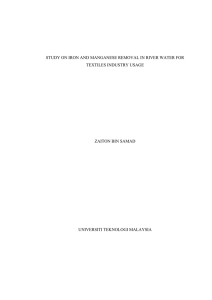Section 1.3: Ions and the Octet Rule
advertisement
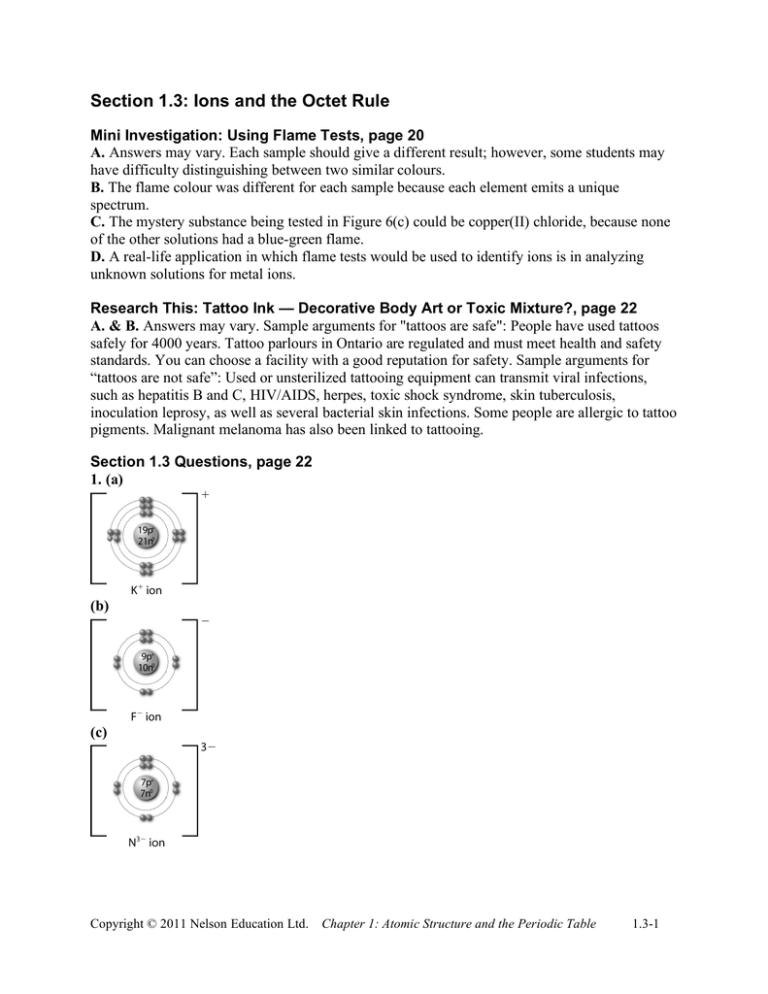
Section 1.3: Ions and the Octet Rule Mini Investigation: Using Flame Tests, page 20 A. Answers may vary. Each sample should give a different result; however, some students may have difficulty distinguishing between two similar colours. B. The flame colour was different for each sample because each element emits a unique spectrum. C. The mystery substance being tested in Figure 6(c) could be copper(II) chloride, because none of the other solutions had a blue-green flame. D. A real-life application in which flame tests would be used to identify ions is in analyzing unknown solutions for metal ions. Research This: Tattoo Ink — Decorative Body Art or Toxic Mixture?, page 22 A. & B. Answers may vary. Sample arguments for "tattoos are safe": People have used tattoos safely for 4000 years. Tattoo parlours in Ontario are regulated and must meet health and safety standards. You can choose a facility with a good reputation for safety. Sample arguments for “tattoos are not safe”: Used or unsterilized tattooing equipment can transmit viral infections, such as hepatitis B and C, HIV/AIDS, herpes, toxic shock syndrome, skin tuberculosis, inoculation leprosy, as well as several bacterial skin infections. Some people are allergic to tattoo pigments. Malignant melanoma has also been linked to tattooing. Section 1.3 Questions, page 22 1. (a) (b) (c) Copyright © 2011 Nelson Education Ltd. Chapter 1: Atomic Structure and the Periodic Table 1.3-1 (d) 2. (a) argon (b) neon (c) neon (d) neon 3. The octet rule is a generalization stating that when atoms combine, they tend to achieve 8 valence electrons. 4. (a) oxide (b) copper(I) (c) tin(IV) (d) sulfate (e) hydroxide (f) ammonium 5. We can communicate which ion is present in a compound by using the IUPAC system, in which a Roman numeral in the ion’s name indicates the charge of the ion. For example, the Mn2+ ion is manganese(II) and the Mn4+ ion is manganese(IV). If manganese(IV) forms a compound with oxygen, for example, the compound is manganese(IV) oxide. 6. (a) NO3– (b) CO32– (c) C2H3O2– (d) MnO4– 7. In calcium carbonate, CaCO3, the cation is Ca2+ and the anion is CO32–. 8. Ne, Na+, Al3+, and O2– have the same electron arrangement. 9. Two experimental techniques that might help to identify the presence of metal ions are a flame test with identity key and a conductivity test. 10. Answers may vary. Sample answer: Iron deficiency anemia is caused by insufficient intake of iron. Iron is an essential part of hemoglobin and decreased levels of iron result in insufficient levels of red blood cells. Common symptoms include weakness, fatigue, and pale skin. Iron-rich foods that can help alleviate anemia include red meats, nuts, beans, and lentils. Iron supplements can be used as well. Copyright © 2011 Nelson Education Ltd. Chapter 1: Atomic Structure and the Periodic Table 1.3-2
